 LOUISIANA DEPARTMENT OF ENVIRONMENTAL QUALITY | Secretary Courtney J. Burdette
LOUISIANA DEPARTMENT OF ENVIRONMENTAL QUALITY | Secretary Courtney J. Burdette
 A DEPARTMENT OF THE STATE OF LOUISIANA
A DEPARTMENT OF THE STATE OF LOUISIANA
Water quality trading (WQT) is an innovative, market-based, cost-effective mechanism to help achieve local water quality improvements (EPA, 2003). In WQT, sources with high costs of reducing pollution can purchase equal or greater pollution reductions from sources with lower costs. This cost difference provides an incentive for trading to occur.
WQT Program in Louisiana
LDEQ developed a WQT program, supported by state legislation and consistent with the Clean Water Act, and state and federal law, to facilitate trading among watershed stakeholders interested and eligible in participating in trading opportunities. This WQT program will allow participation by both point sources and nonpoint sources to help achieve water quality goals.
Trading Forms
All forms and supporting documentation are to be submitted to wq.trading@la.gov.
Credit Generator
LAC 33:IX. Chapter 26 requires that a credit-generating project/activity go through project review, be in place, and be producing water quality benefits prior to participating in WQT.
Credit Buyer
LAC 33:IX. Chapter 26 requires that any entity wishing to purchase credits must submit a WQT Plan.
Credit Renewal/Monitoring
LAC 33:IX. Chapter 26 requires periodic monitoring and reporting on a credit-generating project/activity.
Registry
|
LDEQ Certified Pollutant Reduction Credits |
||||||||
|
Project Documents |
Applicant |
Project Serialization Number |
Project Type and Location |
Pollutant Reduced |
Certification Date |
Credit Expiration/ Renewal Date |
Total Certified Credits1 |
Status |
|
EcoMetrics on behalf of Restore the Earth Foundation |
20230726_REF |
Reforestation Project in LDEQ subsegment LA020303_00 - Lake Cataouatche and Tributaries |
Total Phosphorous (TP) (lb./year) |
09/10/2024 09/10/2025 |
09/10/2025 09/10/2026 |
376 TP (lb./year) 367 TP (lb./year) |
Available |
|
|
Total Nitrogen (TN) (lb./year) |
09/10/2024 09/10/2025 |
09/10/2025 09/10/2026 |
28,267 TN (lb./year) 26,288 TN (lb./year) |
Available |
||||
110% Uncertainty Ratio appied.
Basics of WQT
According to the EPA Trading Policy (2003) and the EPA Water Quality Trading Assessment Handbook (2004), a buyer (e.g. a pollution source such as an industrial facility) purchases water quality improvements, or credits, from a seller (e.g. a farmer installing a buffer along a stream to capture sediment runoff or a facility installing technology that achieves reductions greater than established WQBEL requirements) that reduces pollutants. Both buyers and sellers will need to meet a minimum level, or baseline, before generating credits. The baseline for generating pollution reduction credits must be consistent with applicable water quality standards. In general, a credit is a reduction in pollutant loads beyond baseline conditions. More specifically, it is a measured or estimated unit of pollutant reduction per unit of time adjusted to account for applicable trading ratios. A seller generates excess load reductions by controlling its discharge beyond what is needed to meet its baseline through controlling its flow and/or its discharge concentrations. A buyer can then use the credits to meet a regulatory obligation.
EPA lists trading objectives for economic, social, and environmental benefits. These benefits include:
Economic |
|
Environmental |
|
Social |
|
Resources
Association of Clean Water Administrators (ACWA) Water Quality Trading Toolkit, 2016 https://www.acwa-us.org/toolkits/water-quality-trading-toolkit/. Case Studies available at: https://www.acwa-us.org/water-quality-trading-case-studies/.
EPA, A Long-Term Vision for Assessment, Restoration, and Protection under the Clean Water Act Section 303(d) Program, (2013), available at https://www.epa.gov/sites/production/files/2015-07/documents/vision_303d_program_dec_2013.pdf.
EPA, Nonpoint Source Program and Grants Guidelines for States and Territories, p. 7, note 2 (2013), available at https://www.epa.gov/sites/production/files/2015-10/documents/319-guidelines-fy14.pdf.
EPA, Office of Water, NPDES Permit Writer’s Manual, Ch.9, pp.1 (Sept 2010), available at https://www.epa.gov/sites/production/files/2015-09/documents/pwm_chapt_09.pdf.
EPA, Office of Wetlands, Oceans and Watersheds, Guidance for 2006 Assessment, Listing and Reporting Requirements Pursuant to Sections 303(d), 305(b) and 314 of the Clean Water Act, Section 5, (2005), available at https://archive.epa.gov/water/archive/web/pdf/2005_08_11_tmdl_2006irg_report_2006irg-sec5.pdf.
EPA, Updating EPA’s Water Quality Trading Policy to Promote Market-based Mechanisms for Improving Water Quality, (February 2019) (hereafter “2019 EPA memorandum”), available at: https://www.epa.gov/sites/production/files/2019-02/documents/trading-policy-memo-2019.pdf.
EPA, Water Quality Trading Policy, 68 Fed. Reg. 1608, p. 1609 (Jan. 13, 2003), available at http://www.gpo.gov/fdsys/pkg/FR-2003-01-13/pdf/03-620.pdf.
LDEQ Water Quality Management Plan is available at: http://deq.louisiana.gov/page/water-quality-management.
Louisiana Coastal Master Plan can be found at http://coastal.la.gov/our-plan/.
Louisiana Revised Statute R.S. 30:2074.B.(9)(a) http://www.legis.la.gov/Legis/Law.aspx?d=87135.
Louisiana State Legislature, Act 371, 2017 Regular Session, Effective June 23, 2017 http://www.legis.la.gov/Legis/BillInfo.aspx?s=17RS&b=ACT371&sbi=y.
National Network on Water Quality Trading publication Building a Water Quality Trading Program: Options and Considerations, 2015 http://willamettepartnership.org/publications/.
United States Department of Agriculture-Natural Resources Conservation Service (USDA-NRSC) Field Office Technical Guide (FOTG) found at http://efotg.sc.egov.usda.gov.
USDA-NRSC, Conservation Practice Standard: Nutrient Management, Code 590, pp. 6-7 (2012), available at http://www.nrcs.usda.gov/Internet/FSE_DOCUMENTS/stelprdb1046896.pdf.